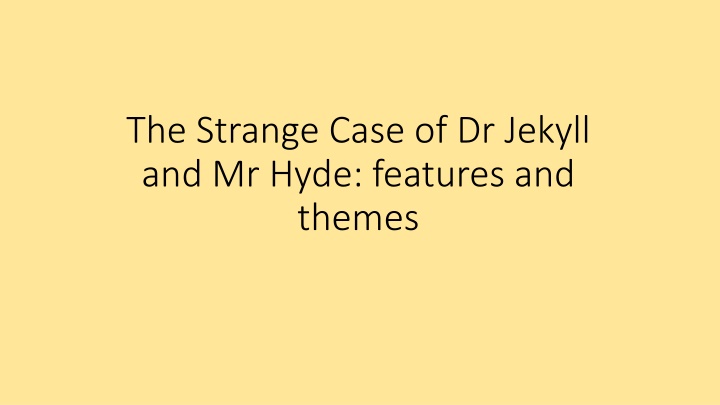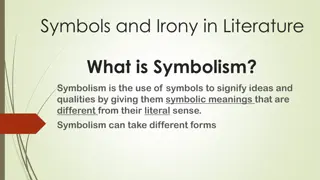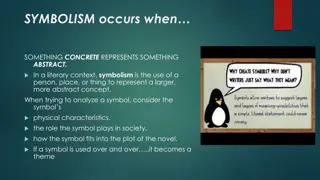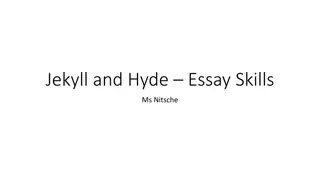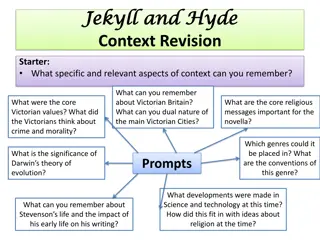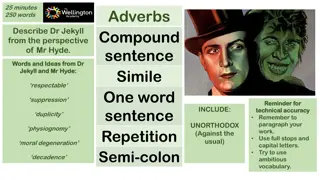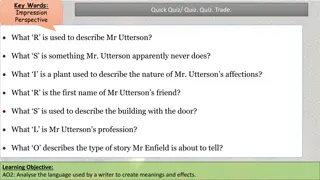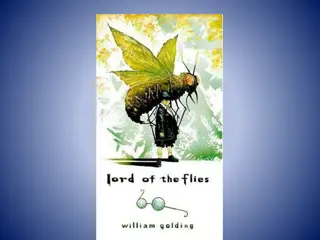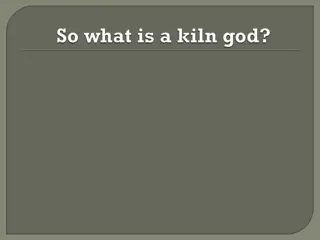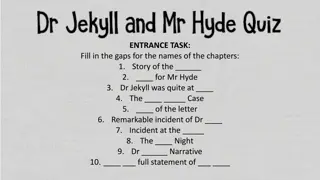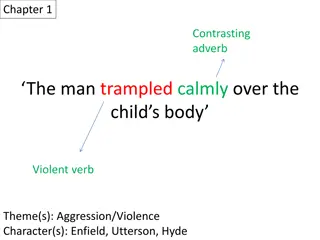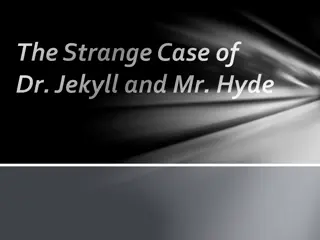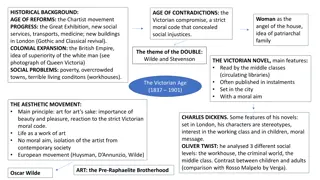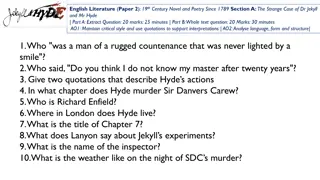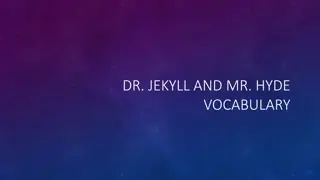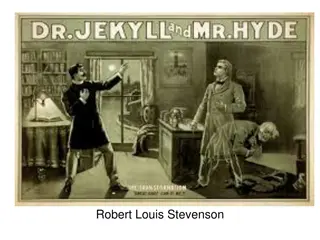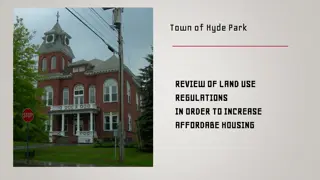Exploring the Themes and Symbolism in Dr. Jekyll and Mr. Hyde
In "The Strange Case of Dr. Jekyll and Mr. Hyde," Robert Louis Stevenson delves into the duality of human nature through the transformation of Dr. Jekyll into Mr. Hyde. This novella portrays the hidden dark side within individuals and explores the moral dichotomy of humanity. Themes such as appearances versus reality, strict Victorian morality, and the co-existence of good and evil are prominent. Symbolism, like the character names and the dual doors of Jekyll's house, further emphasize this internal conflict. Through an insightful analysis, readers can unpack the depths of this classic tale and contemplate the complex nature of human behavior and morality.
Download Presentation

Please find below an Image/Link to download the presentation.
The content on the website is provided AS IS for your information and personal use only. It may not be sold, licensed, or shared on other websites without obtaining consent from the author.If you encounter any issues during the download, it is possible that the publisher has removed the file from their server.
You are allowed to download the files provided on this website for personal or commercial use, subject to the condition that they are used lawfully. All files are the property of their respective owners.
The content on the website is provided AS IS for your information and personal use only. It may not be sold, licensed, or shared on other websites without obtaining consent from the author.
E N D
Presentation Transcript
The Strange Case of Dr Jekyll and Mr Hyde: features and themes
The Strange Case of Dr Jekyll and Mr Hyde (1886) In Dr Jekyll and Mr Hyde, Dr Jekyll is a well-respected and benevolent scientist who secretly has a dark, immoral side to his personality. This side to his personality is not active, however, he decides to activate it through his experiments. He manages to create a drug which enabled him to project himself into a repulsive person -Mr Hyde - who commits cruel acts of violence against others.
THEMES Through this change in Jekyll's character, Stevenson shows the duality in human nature - the idea that everyone is capable of good and evil deeds Dr Jekyll is perceived as a kind, educated and popular scientist. He is the embodiment of 'goodness. Mr Hyde is perceived as a cruel, ugly, vicious man who commits wild acts of violence against innocent people. He is the embodiment of 'evilness'.
Keys to interpretation (1) A parallelism with the Victorian society: APPEARANCES and REPUTATION The decorum and the respectability of the Victorian society hides often distasteful and unpleasant underside (Victorian Compromise) the apparent respectability of Dr Jekyll hides an hidden underside. Dr Jekyll wants to keep up a well-respected fa ade, even though he has a lot of sinful tendencies
Keys to interpretation (2) The consequences STRICT MORALITY of the Voctorian society and his The severe Victorian morality leads many people to suppress their desires and feelings living a frustrated and hypocrite life. As a member of the upper class, Dr Jekyll is expected to behave properly and as a gentleman; this is why he represses his instinctual side, whose hidden presence therefore grows more oppressive until to burst and get out of the control.
Symbolism (1) Dr Jekyll and Mr Hyde is a symbolical story, a metaphor of the moral dichotomy of the human soul. The co-existence of good and evil in man is in fact emphasized through many symbolical devices: Names: the names of the protagonist/s can be interpreted in this way: Jekyll may stand for the Anglo-French words je kill , while the pronunciation of Hyde suggests something secret, hidden within something else; The door- Jekyll s house has two doors, a front door opening on a respectable square and a degraded back door full of cracks. This latter looks like a kind of opening on the unconscious, on hell, on what is different from the normally accepted social values;
Symbolism (2) The house- while the front of Jekyll s house is typically Victorian and respectable, the back is a sinister, dirty building, without windows, arousing disgust and horror. The house itself is half Jekyll and half Hyde; The weather- the fog, the cloudy sky, the night, persistent throughout the book, all convey a sense of real and symbolical darkness.
